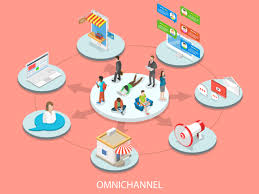Omnichannel selling
Omnichannel selling is the term used for businesses that sell their products and services through multiple channels. These businesses use a variety of methods to reach their customers, including online sales, retail stores, and call centers. The goal of omnichannel selling is to provide a seamless experience for customers, no matter how they choose to buy from the company.
There are many benefits of omnichannel selling for businesses and customers alike. For businesses, it can mean increased sales and improved customer loyalty. Customers appreciate the convenience of being able to purchase products or services in multiple ways, and they appreciate not having to deal with different customer service representatives for each interaction. Omnichannel selling can also help companies improve their understanding of customer needs and preferences. By tracking data from all channels, companies can get a better idea of what products or services people are interested in buying and make changes accordingly.
There are many benefits of omnichannel selling to help you scale your business.
1. Increased customer satisfaction.
When customers can buy what they want, when they want it, from the channel of their choice, they’re more likely to be happy with their purchase. In fact, a study by Forrester found that 73% of customers prefer to use multiple channels when making a purchase.
2. Improved customer loyalty.
Omnichannel selling helps keep your customers engaged and loyal by providing an engaging and convenient shopping experience. According to the Walker Sands 2016 Future of Retail Study, 43% of shoppers said they would leave a retailer if its website was difficult to navigate or its inventory wasn’t available online.
3. More sales opportunities.
By offering omnichannel access, you open up new sales opportunities for your business, as consumers can buy from you anywhere and any time they want. This gives them greater flexibility and convenience when shopping for your products or services.
4. Improved inventory management.
Retailers can track inventory levels more accurately and manage them more effectively across different channels. This helps reduce out-of-stocks and excess inventory, which leads to lower costs and increased profits.
5. More efficient operations.
By integrating all sales channels into one system, retailers can streamline their operations and improve efficiency across the board. This reduces processing time and allows employees to focus on other important tasks that will help grow the business.
6. Enhanced competitiveness.
In order to stay competitive in today’s marketplace, businesses need to adopt an omnichannel strategy. By offering a consistent experience across all touchpoints, you can differentiate yourself from competitors who only operate in certain channels or offer a fragmented customer experience.
Here are interesting statistics about Omni and multichannel selling for consumer brands.
- The purchase frequency of an omnichannel brand is 2.5X more than a single channel brand.
- 73% of shoppers use multiple channels for shopping ~ Harvard Business Review
- Customer retention rates are 90% higher for omnichannel ~ Omnisend
- Average order value is on average 13% more on omnichannel vs a single channel
- Marketing campaigns funnelled through 3 or more channels vs a single channel deliver 287% higher purchase rates.
Talk to our experts now on how to improve your omnichannel strategy.


